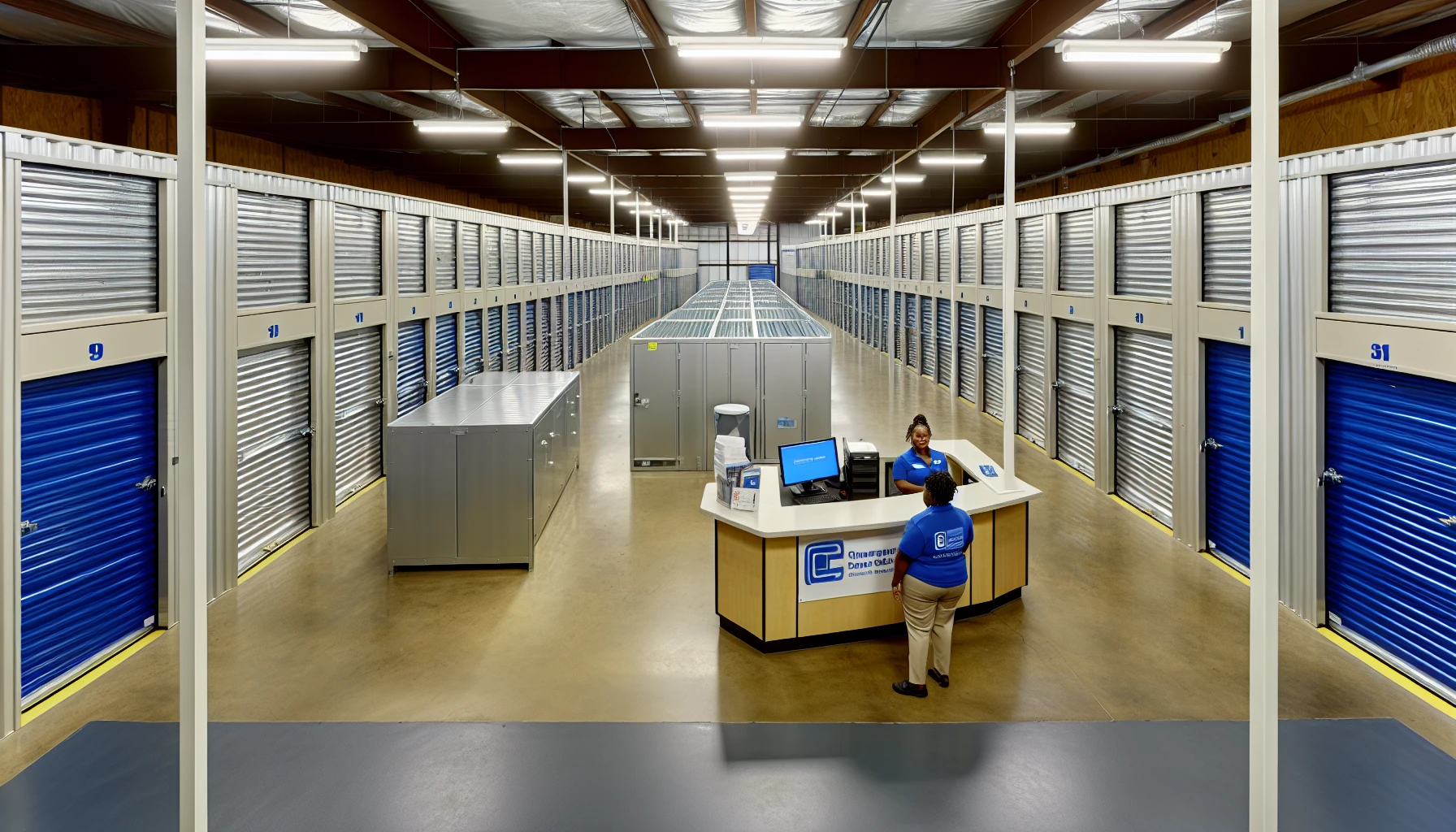Long Distance Moving Tips for Stress-Free Relocation
23Nov

Embarking on a long-distance move can be both exciting and daunting. As you prepare to start a new chapter in a different location, it’s essential to have a well-organized plan to ensure a stress-free relocation. Our comprehensive guide covers everything from essential long-distance moving services to avoiding common moving mistakes, so you can focus on the adventure that lies ahead.
Key Takeaways
Professional long-distance moving services provide comprehensive solutions for stress-free relocation.
Careful planning and evaluation of necessary items is essential to ensure a successful move.
Researching reputable companies, transparent pricing, and customer reviews will help mitigate unexpected costs during the process.
Essential Long Distance Moving Services

Expertise from professional long-distance moving companies, who offer services tailored to your needs, is crucial for a seamless relocation. These comprehensive services include packing and unpacking, storage solutions, and customized moving plans, all designed to make your long-distance move a smooth and worry-free experience.
Packing and Unpacking
Your belongings are guaranteed to be handled with care and expertise during the move when entrusted to professional packers and unpackers. They utilize suitable packing materials and techniques to safeguard fragile items throughout the long-distance journey, giving you peace of mind that your possessions will arrive in perfect condition.
Upon arrival at your new home, professional movers follow a systematic unpacking procedure, starting with the essentials and focusing on one room at a time. This organized approach allows you to settle in quickly and efficiently while minimizing the stress that often accompanies moving long distances.
Storage Solutions

Storage options for long-distance moving are varied, catering to needs that are either temporary or long-term. The cost of storage during a move depends on factors such as the duration, size of the storage unit, and location.
A popular choice for both local and long-distance moves is a 16-foot container, which offers ample space for the contents of a typical home. Researching and comparing storage companies in advance will help you find the most suitable and cost-effective solution for your moving needs.
Customized Moving Plans
For a smooth and successful relocation, a tailored moving plan is a necessity. It comprises identifying the personnel responsible for the move, establishing a timeline, allocating a budget, and organizing the logistics of the move. Customized moving plans take into account the size of your household, distance of the move, specific requirements, and budget, providing a personalized approach that facilitates better coordination and scheduling.
Several key factors need to be considered when devising a customized moving plan:
Timeline
Budget
Inventory
Space planning
By understanding your unique requirements and preferences, a custom Ottawa long distance moving plan ensures a more efficient and organized relocation process, minimizing the chances of delays or complications.
Cutting Down on the Clutter: Take it Or Leave it?

The decision about what to bring and what to leave behind constitutes a crucial step in the long-distance moving process. Carefully evaluating the necessity of:
furniture
non-essential items
appliances
miscellaneous belongings
will help you cut down on the clutter and make your move more cost-effective and efficient.
Which Furniture is essential?
Essential furniture typically includes:
Beds
Sofas
Dining tables
Chairs
Wardrobes
Coffee tables
Lamps
Weighing the costs of transporting large items versus purchasing new ones is an important consideration when deciding whether to move or replace your furniture.
To ensure your furniture fits in your new home, take measurements of each item and the available space, as well as the height and width of doorways and hallways.
Non-essential items
A key step in decluttering before a move involves identifying non-essential items that can be sold or donated. Begin by packing non-essentials, such as books, decorative items, seasonal clothing, and specialty kitchenware. This will help you prioritize essential items and minimize clutter during the move.
Items that may not be necessary when relocating include:
books
magazines
vinyl records
CDs and DVDs
picture frames
artwork
Consider selling non-essential items through a garage sale or online platforms, or donate them to local charities like Goodwill.
Appliances
Considerations such as:
Appropriateness
Cost-effectiveness
Risk
Size and weight
Transportation logistics
Installation
Warranty and service
are crucial in determining whether to move or replace appliances.
When preparing appliances for a long-distance move, it’s crucial to clean, dry, disconnect, and drain hoses, as well as secure loose cords and protect them with appropriate packing materials.
Odds and ends
An essential aspect of long-distance moving preparation involves sorting through miscellaneous items and decluttering. To manage odds and ends efficiently, consider the following steps:
Donate or discard items you no longer require.
Pack strategically, organizing items by category or room.
Use suitable packing materials, such as boxes, bubble wrap, and packing paper.
Take inventory of all items you are packing to keep track of your belongings.
By following these steps, you can streamline the moving process and ensure that your miscellaneous items are handled effectively.
This meticulous approach will help ensure a smooth and organized move, allowing you to focus on the exciting new chapter ahead.
Choosing the Right Long-Distance Movers

For a successful move, the selection of the right long-distance moving company is crucial. By focusing on aspects such as reputation, transparent pricing, and customer reviews, you can ensure a smooth relocation experience with a trustworthy and reliable company that caters to your moving needs.
Reputation and Accreditation
Dependability and trustworthiness throughout the moving process are guaranteed by choosing a reputable and accredited company. Affiliations with organizations like the Canadian Association of Movers and the Better Business Bureau can provide added credibility and assurance that the company you select is reliable.
Renowned companies such as Allied Van Lines and United Van Lines are highly esteemed and widely recognized throughout North America, offering a high level of professionalism and expertise for your long-distance move.
Transparent Pricing
For avoiding hidden fees and unexpected costs during a long-distance move, transparent pricing is paramount. Here are some steps to follow:
Obtain detailed, written estimates from multiple companies.
Compare prices and services to ensure you receive a reasonable offer.
Make an informed decision based on the information gathered.
By following these steps, you can avoid hidden fees and unexpected costs during your long-distance move.
Additionally, researching your chosen moving company and understanding their pricing structure will help you avoid any financial surprises.
Customer Reviews and Testimonials
A vital step in selecting the right long-distance moving company involves evaluating customer reviews and testimonials. These firsthand accounts provide insight into the company’s performance, helping you make an informed decision based on the experiences of others. When assessing customer reviews, consider factors such as:
Accuracy and authenticity
Consistency
Overall rating and feedback
The company’s response to reviews
This thorough evaluation will help you find a long-distance moving company that is best suited to your needs and preferences.
Preparing for a Successful Long Distance Move
A successful long-distance move requires careful planning and organization. By creating a moving timeline, gathering important documents, and properly handling fragile and bulky items, you can ensure a smooth relocation process that allows you to focus on settling into your new home.
Creating a Moving Timeline

For staying organized and on track throughout the moving process, developing a moving timeline is essential. A well-structured timeline can help you prioritize tasks, complete them in a timely manner, and reduce stress.
Ideally, you should allocate a minimum of 8 weeks for packing before a long-distance move, allowing for adequate time to sort, discard, and pack items, as well as research moving companies.
Gathering Important Documents
For a seamless long-distance move, collecting and organizing important documents is crucial. These documents include:
Moving estimate
Bill of lading
Order for service
Inventory documentation
Passport
Medical records
Birth certificate
Social security cards
Vaccination records
Tax documents
Proper organization and secure storage of these documents will ensure they remain accessible and safe throughout the move, thanks to our reliable storage services.
Handling Fragile and Bulky Items
To ensure safe transportation of fragile and bulky items during a long-distance move, proper packing and handling is key. Using protective materials, such as bubble wrap and packing foam, can safeguard fragile items, while disassembling and packing bulky furniture ensures their protection during transit.
By paying close attention to the packing and handling of these items, you can prevent damage or loss and guarantee a successful move.
Cross-Country and International Moving Considerations
Cross-country and international moves present unique challenges and considerations, such as customs regulations and adapting to a new location and culture. Being well-prepared and informed about these aspects will help you navigate the complexities of your long-distance move and ensure a smooth transition to your new home.
Customs and Regulations
Research and preparation are required for the complex process of navigating customs and regulations for international moves. Ensuring you have the necessary documents, such as:
a passport
a visa
a completed customs declaration form
an inventory of goods shipped
Our services will help you comply with the specific regulations of your destination city and country.
Taking the time to understand the customs requirements of your new location will help you avoid any delays or penalties during the moving process.
Adapting to a New Location
The experience of settling into a new location and culture can oscillate between being exciting and challenging. To ease the transition, immerse yourself in the local culture by:
Exploring museums
Visiting art galleries
Checking out historical sites
Attending cultural events and festivals
Engaging with locals and learning about their customs and traditions
Volunteering opportunities, assistance with adjusting to workplace culture, and enrolling children in school are just a few of the exceptional services available to help you adapt to your new surroundings and embrace the unique experiences that come with an international move.
Common Long Distance Moving Mistakes to Avoid
A smooth and successful corporate relocation can be ensured by avoiding common long-distance moving mistakes such as last-minute packing, overlooking insurance options, and underestimating moving costs.
Being aware of these pitfalls and taking the necessary steps to prevent them will contribute to a stress-free moving experience.
Last-Minute Packing
Increased stress, disorganization, and the possibility of items being misplaced or damaged during the move can result from last-minute packing. To avoid these issues, start packing early, prioritizing non-essential items and gradually progressing to daily essentials.
A well-organized packing process will help minimize stress and ensure a successful long-distance move.
Overlooking Insurance Options
For peace of mind, ensuring adequate insurance coverage for your belongings during transit is crucial. Moving insurance provides protection in the event of damage, loss, or theft, safeguarding the value of your possessions.
Researching and selecting the appropriate insurance options for your long-distance move will help you avoid unexpected costs and financial surprises.
Underestimating Moving Costs
To avoid unexpected financial obligations and additional expenses during your long-distance move, accurately estimating moving costs is essential. Consider all possible costs, such as insurance, packing services, and extra services, and research your chosen moving company to ensure transparent pricing.
A thorough understanding of the costs associated with your move will help you plan and budget accordingly.
Summary
In conclusion, a successful long-distance move requires careful planning, organization, and the assistance of a reputable moving company. By following our comprehensive guide, you can ensure a stress-free relocation experience, allowing you to focus on embracing the exciting new chapter that lies ahead in your new home.
Frequently Asked Questions
How to move across canada?
Moving across Canada can be achieved by renting a moving truck, container or hiring a full service moving company – whichever option suits your budget and time constraints.
How far in advance should I start packing for a long-distance move?
Start packing for a long-distance move at least 8 weeks in advance to ensure that the process is as stress-free and organized as possible.
What essential furniture should I bring when moving long-distance?
When moving long-distance, make sure to bring essential pieces of furniture, such as beds, sofas, dining tables, chairs, wardrobes, coffee tables, and lamps.
How can I ensure my fragile items are protected during a long-distance move?
To protect fragile items during a long-distance move, use packing materials such as bubble wrap and foam. Ensure boxes are sealed securely and label them clearly to reduce the risk of breakage.
What factors should I consider when selecting a long-distance moving company?
When selecting a long-distance moving company, consider reputation, pricing transparency, and customer reviews to ensure a positive experience.




